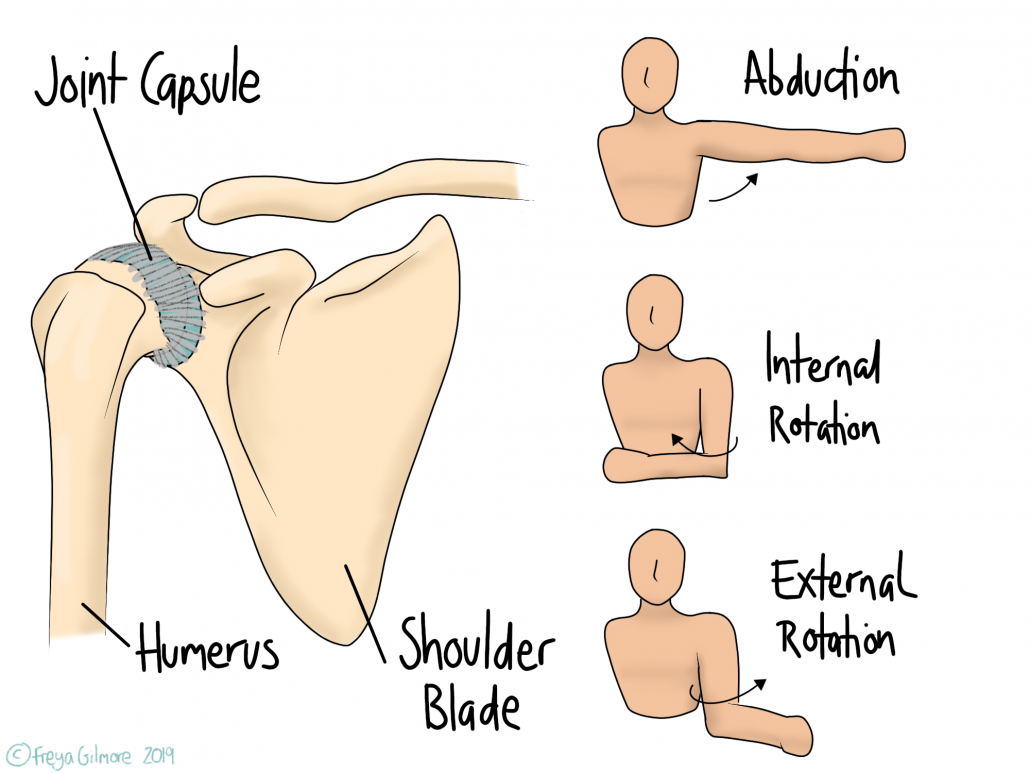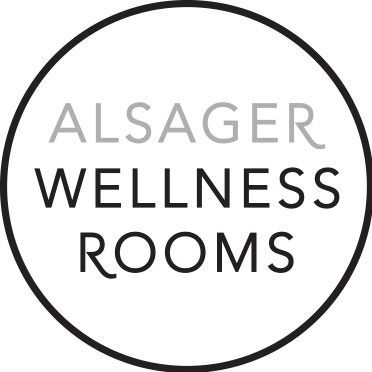Frozen shoulder is a condition causing pain and loss of movement in the shoulder. Not all movements are affected. The following three become painful and limited throughout the course of the freezing phase:
- external rotation: reaching to the back seat in the car
- internal rotation: putting your arm in a sleeve
- abduction: lifting your arm up from the side

Symptoms and Causes
The progress of the condition can be broken down into three phases. Firstly freezing, in which pain and restriction increase. After a few months we move to the frozen phase, where movement remains limited but pain decreases. As movement begins to return, you are in the thawing phase. Unlike other shoulder problems, the joint will stay restricted whether you move it yourself or your osteopath examines it for you while you are relaxed. This is because the problem is caused by tightness and inflammation in the layer around the shoulder joint.
On top of this, the muscles around the shoulder often tighten up in an effort to protect the shoulder. This can inadvertently limit the other movements that are not limited by the frozen shoulder itself. As well as the ball and socket joint, there is a lot of movement between the shoulder blade and rib cage. If the muscles around here cause restriction, suddenly there is a reduction in almost all ranges, despite that joint not being affected by the condition itself.
Although the condition causes a problem in the shoulder joint itself, it can have a secondary effect elsewhere. The body compensates for pain and lost movement, asking more of nearby areas. Pain in the surrounding muscles and up into the neck is common. Some people also develop aches and pains in the other shoulder as they carry out their normal activities with the other arm.
Risk Factors
Often it begins for no apparent reason, although there are risk factors. A period of restriction in the arm, as with using a sling after a fracture or surgery, can lead to frozen shoulder. People with diabetes, particularly if it is poorly controlled, are more likely than average to develop the condition. There are also some medications associated with its development. However, a lot of the time it comes on for no apparent reason.
Managing Frozen Shoulder
Your osteopath cannot prevent the development of the condition once it starts, but research suggests that manual therapy and exercise can speed it along. We can work with you to develop an exercise plan that you can stick to and gradually build up as symptoms improve. If you find the normal exercises dry, we can think outside the box. Maybe you want to return to tennis, so it would make sense to develop tennis movements using the weight of the racket.
We will also work to manage any areas of compensation. Often we find that the restriction causes you to hitch the affected shoulder, causing tightness into the top of the shoulder and the neck. This in turn can lead to headaches, so treating the body as a whole can prevent secondary issues. Releasing the local muscles helps to relieve the discomfort generated by them, but also frees up the other ranges of the shoulder.

